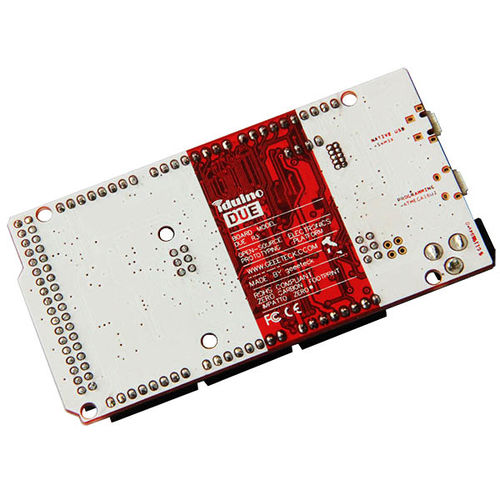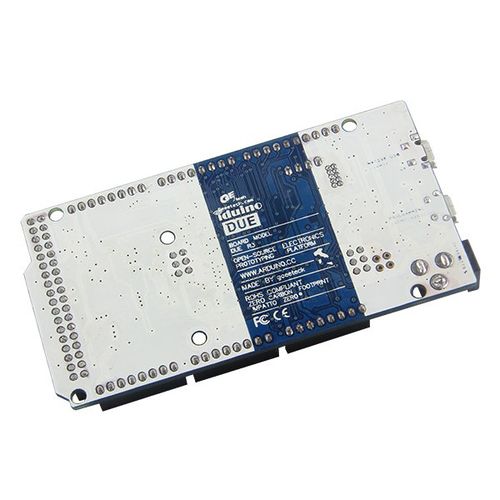Arduino DUE
Contents
Overview
The Due is Arduino's first ARM-based Arduino development board. This board is based on a powerful 32bit CortexM3 ARM microcontroller made programmable through the familiar Arduino IDE. It increases the computing power available to Arduino users keeping the language as compatible as possible so that many programs will be migrated in a matter of minutes!
The Arduino Due has 54 digital input/output pins (of which 12 can be used as PWM outputs), 12 analog inputs, 4 UARTs (hardware serial ports), an 84 MHz clock, a USB-OTG capable connection, 2 DAC (digital to analog), 2 TWI, a power jack, an SPI header, a JTAG header, a reset button and an erase button. There are also some cool features like DACs, Audio, DMA , an experimental multi tasking library and more.
To compile code for the ARM processor, you'll need the latest version of the Arduino IDE: v1.5 (After a period of testing and debugging this will replace the 1.0.1 IDE altogether)
Warning: Unlike other Arduino boards, the Arduino Due board runs at 3.3V. The maximum voltage that the I/O pins can tolerate is 3.3V. Providing higher voltages, like 5V to an I/O pin could damage the board.
Note:The program will not run until you press the key of reset when you first fire program for the DUE from Native USB Port in everytime.
Features:
- Microcontroller: AT91SAM3X8E
- Operating Voltage: 3.3V
- Recommended Input Voltage: 7-12V
- Min-Max Input Voltage: 6-20V
- Digital I/O Pins: 54 (of which 12 provide PWM output)
- Analog Input Pins: 12
- Analog Outputs Pins: 2
- Total DC Output Current on all I/O lines: 130 mA
- DC Current for 3.3V Pin: 800 mA
- DC Current for 5V Pin: 800 mA
- Flash Memory: 512 KB all available for the user applications
- SRAM: 96 KB (two banks: 64KB and 32KB)
- Clock Speed: 84 MHz
Documents:

